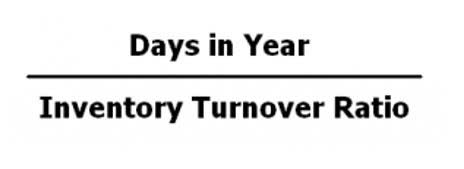
That is, each entry made on the Debit side has a corresponding entry on the Credit side. This equation should be supported by the information on a company’s balance sheet. The Accounting Equation is the foundation https://www.bookstime.com/articles/liability-accounts of double-entry accounting because it displays that all assets are financed by borrowing money or paying with the money of the business’s shareholders.

Arrangement #3: Assets = Liabilities + Owner’s Capital – Owner’s Drawings + Revenues – Expenses
For example, you the basic accounting equation is: can talk about a time you balanced the books for a friend or family member’s small business. This arrangement is used to highlight the creditors instead of the owners. So, if a creditor or lender wants to highlight the owner’s equity, this version helps paint a clearer picture if all assets are sold, and the funds are used to settle debts first. A lender will better understand if enough assets cover the potential debt. The accounting equation focuses on your balance sheet, which is a historical summary of your company, what you own, and what you owe.
Liabilities
- The accounting equation is based on the premise that the sum of a company’s assets is equal to its total liabilities and shareholders’ equity.
- For example, ABC Co. started the company on 02 January 2020 by injecting cash into the business of $50,000.
- While single-entry accounting can help you kickstart your bookkeeping knowledge, it’s a dated process that many other business owners, investors, and banks won’t rely on.
- Debt is a liability, whether it is a long-term loan or a bill that is due to be paid.
- After the company formation, Speakers, Inc. needs to buy some equipment for installing speakers, so it purchases $20,000 of installation equipment from a manufacturer for cash.
- The only equity is Sam’s capital (i.e., owner’s equity amounting to $100,000).
- That is, each entry made on the debit side has a corresponding entry (or coverage) on the credit side.
We may earn a commission when you click on a link or make a purchase through the links on our site. All of our content is based on objective analysis, and the opinions are our own. On 22 January, Sam Enterprises pays $9,500 cash to creditors and receives a cash discount of $500. The difference between the sale price and the cost of merchandise is the profit of the business that would increase the owner’s equity by $1,000 (6,000 – $5,000).
What Is Shareholders’ Equity in the Accounting Equation?
The total dollar amounts of two sides of accounting equation are always equal because they represent two different views of the same thing. The accounting equation equates a company’s assets to its liabilities and equity. This shows all company assets are acquired by either debt or equity financing. For example, when a company is started, its assets are first purchased with either cash the company received from loans or cash the company received from investors.

On one side is the furniture coming into the business as an asset (what the business owns). Additionally on the other side is the funding for the asset in this case credit from a supplier (what the business owes). Shareholder Equity is equal to a business’s total assets minus its total liabilities. It can be found on a balance sheet and is one of the most important metrics for analysts to assess the financial health of a company.

- Required Explain how each of the above transactions impact the accounting equation and illustrate the cumulative effect that they have.
- To further illustrate the analysis of transactions and their effects on the basic accounting equation, we will analyze the activities of Metro Courier, Inc., a fictitious corporation.
- This then allows them to predict future profit trends and adjust business practices accordingly.
- Other names used for this equation are balance sheet equation and fundamental or basic accounting equation.
- As its name implies, the Accounting Equation is the equation that explains the relationship of accounting transactions.
However, when the owner’s equity is shifted on the left side, the equation takes on a different meaning. The accounting equation is the foundation of double-entry bookkeeping which is the bookkeeping method used by most businesses, regardless of their size, nature, or structure. This bookkeeping method assures that the balance sheet statement always equals in the end. We know that every business holds some properties known as assets.

Ted is an entrepreneur who wants to start a company selling speakers for car stereo systems. After saving up money for a year, Ted decides it is time to officially start his business. He forms Speakers, Inc. and contributes $100,000 to the company in exchange for all of its newly issued shares. This business transaction increases company cash and increases equity by the same amount. The double-entry practice ensures that the accounting equation always remains balanced, meaning that the left-side value of the equation will always match the right-side value. Essentially, the representation equates all uses of capital (assets) to all sources of capital, where debt capital https://www.instagram.com/bookstime_inc leads to liabilities and equity capital leads to shareholders’ equity.

Understanding how to use the formula is a crucial skill for accountants because it’s a quick way to check the accuracy of transaction records . Before technological advances came along for these growing businesses, bookkeepers were forced to manually manage their accounting (when single-entry accounting was the norm). Of course, this lead to the chance of human error, which is detrimental to a company’s health, balance sheets, and investor ability. In fact, most businesses don’t rely on single-entry accounting because they need more than what single-entry can provide. Single-entry accounting only shows expenses and sales but doesn’t establish how those transactions work together to determine profitability. While the accounting equation goes hand-in-hand with the balance sheet, it is also a fundamental aspect of the double-entry accounting system.